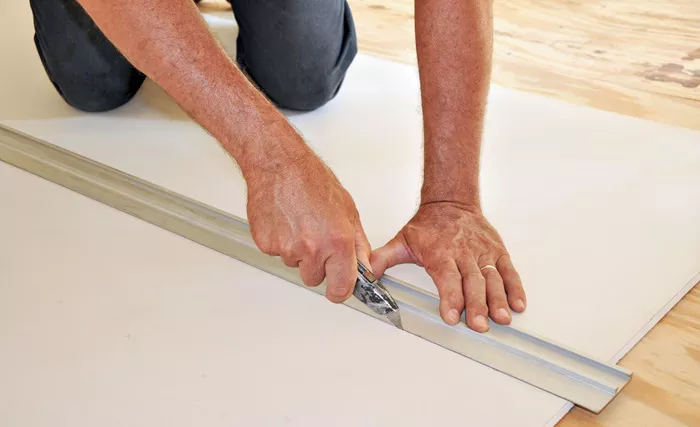Cutting drywall is a fundamental skill for both DIY enthusiasts and professionals involved in home improvement and construction. Whether you’re installing new drywall, making repairs, or creating openings for electrical outlets and fixtures, knowing the proper techniques for cutting drywall will ensure a clean, precise job. This guide covers the essential steps and tools required to cut drywall effectively.
1. Gather the Necessary Tools and Materials
Before starting, gather all the tools and materials you’ll need. Essential tools include a utility knife, a drywall saw, a T-square or straightedge, a pencil, and a drywall square. Depending on the complexity of the job, you may also need a chalk line for larger cuts or a reciprocating saw for intricate sections. Ensure you have protective gear such as safety goggles and a dust mask to shield yourself from dust and debris.
2. Measure and Mark the Drywall
Accurate measurement and marking are crucial for a clean cut. Use a tape measure to determine the dimensions of the area you need to cut. Mark your measurements on the drywall with a pencil, using a T-square or straightedge to draw straight, precise lines. For larger cuts, a chalk line can help create a long, straight mark. Double-check your measurements to avoid mistakes and ensure that the cut aligns perfectly with your intended design or installation.
3. Score the Drywall
Scoring the drywall is a technique used to make the initial cut along your marked line. Use a utility knife with a sharp blade for this step. Place the drywall on a flat surface and align the blade of the utility knife with your marked line. Apply firm, consistent pressure to cut through the outer paper layer and into the gypsum core, but avoid cutting all the way through. The goal is to create a groove along the line to guide the break and ensure a clean cut.
4. Snap the Drywall
After scoring, it’s time to snap the drywall along the scored line. Gently lift the edge of the drywall on one side of the score and apply pressure downward to break the board along the groove. Use your hands or a straightedge to guide the break for a cleaner result. If the drywall does not break cleanly, you may need to score the line again to ensure a smooth, straight cut.
See also: How Much Is A Cord Of Wood? Understanding Costs And Measurements
5. Cut Through the Back Paper
Once the drywall has snapped, you need to cut through the remaining paper on the back side. Place the drywall on a flat surface with the cut side facing up. Use the utility knife to carefully cut along the backside of the scored line to fully separate the piece from the main board. Ensure that your cut is clean and even to avoid frayed edges.
6. Make Complex Cuts and Openings
For intricate cuts, such as openings for electrical outlets, switches, or plumbing, use a drywall saw. Mark the outline of the opening on the drywall and drill a small hole inside the marked area if necessary. Insert the drywall saw into the hole and carefully cut along the marked lines. For precise and complex cuts, a jigsaw or reciprocating saw can be used, but ensure that the saw blade is appropriate for cutting drywall to avoid damaging the surrounding area.
7. Smooth the Edges
After cutting the drywall, check the edges for any rough or uneven areas. Use a utility knife or sanding block to smooth out any irregularities. For larger cuts, a drywall rasp can be used to refine the edges and achieve a smooth finish. Properly smoothed edges ensure a better fit during installation and help achieve a professional appearance.
8. Clean Up
Once the cutting is complete, clean up the workspace. Remove any dust and debris from the cutting area, and dispose of any leftover drywall scraps according to local regulations. Ensure that all tools are cleaned and stored properly to maintain their condition and readiness for future projects.
Conclusion
Cutting drywall is a straightforward process when approached with the right tools and techniques. By following these steps and taking care to measure accurately and handle tools properly, you can achieve precise cuts and ensure a successful installation or repair. Regular practice and attention to detail will help you master the skill of cutting drywall, contributing to a more professional finish in your home improvement projects.
Related Topics:
-
From Homeowners To Professionals: Why Stihl Chainsaws Lead The Pack
-
The Ultimate Guide To Stihl Weed Eaters: Features, Benefits, And Top Models

